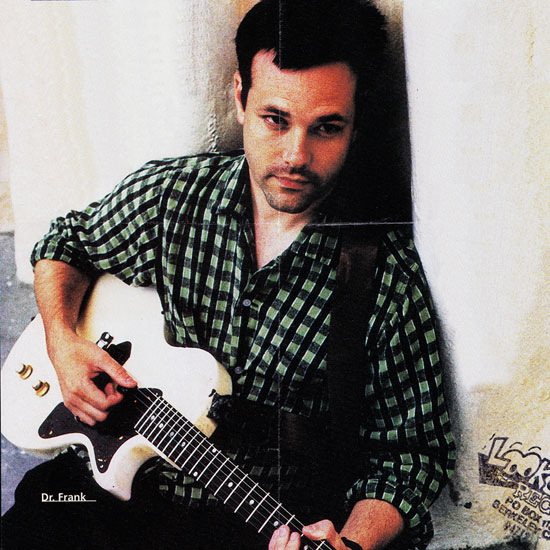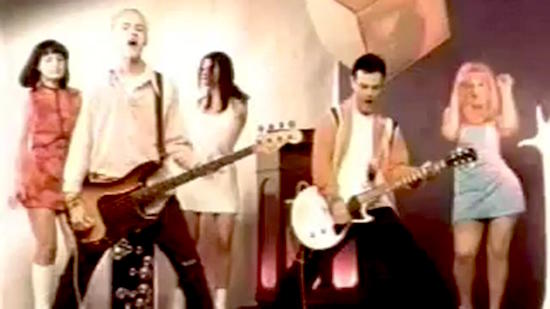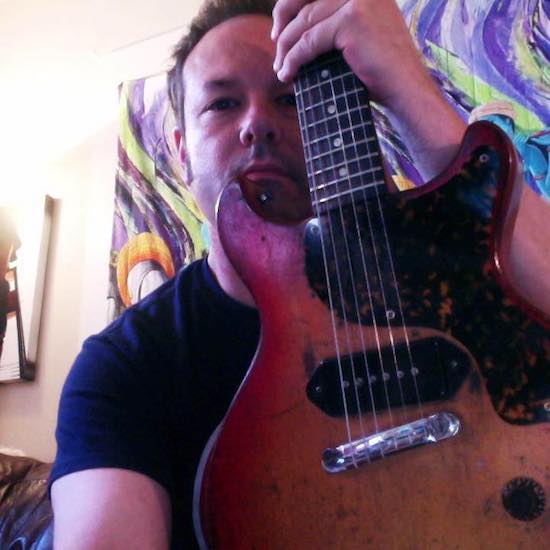April 11, 2017
Sink or Swim
So, our four shows with Teenage Bottlerocket and Nobodys went great and I had a lot of fun doing them. As always, I really enjoyed talking to all the "lifers," i.e. longtime MTX fans, each of whom shared detailed accounts of their history of seeing the band and following its progress, such as it has been, and the significance of particular records and songs in their lives. Always nice to be appreciated, and you could definitely "feel the love", particularly in Phoenix, where we hadn't played in something like thirteen years. Lots of these folks seem to have had some success in indoctrinating their children, as well, some of whom seemed just as excited and engaged as their parents. Which feels odd. Turns out, there is such a thing as an MTX family. Perhaps this is what it felt like to be a member of the Grateful Dead. Not sure.
So thanks to TBR and Nobodys, and everyone who showed up, shared stories, bought me beers.
But this post is a guitar update, mainly. This was the first time I'd played my old, notoriously idiosyncratic, '57 Les Paul Jr. at a show since I had it overhauled, revamped, fixed up, and fine-tuned this past year. This was an experiment to which I committed myself entirely, bringing no back-up guitar (and refusing offers to have other bands' guitars on hand just in case): it was going to be sink or swim. tl;dr: mostly, it swam, and when it did it swam just beautiful.
If you haven't seen it before, here it is, circa 1996:

The biggest problem of yore had been how difficult it was to keep it in tune from song to song, and, really, to get it in tune in the first place. This difficulty went beyond the familiar second- and third-string funkiness that all guitars have, maybe particularly Gibsons, that is just the nature of the beast. Tuning a guitar is always going to be a compromise and an approximation and you have to deal with the fact that math and the actual physical world don't quite match up perfectly. We live in a fallen world, and so do our guitars. Back in the old days I used to try to compensate for the anomalies and quirks by playing lower chords and notes and bending them up into tune as I went up the neck (a habit that was quite hard to break when I switched to the more reliable Epiphone Coronet as the primary guitar sometime in '97.) Part of this was the pre-tune-a-matic, non-adjustable original stock wrap-around bridge that allowed for no easy intonation adjustments, but the biggest part, I now realize, is the fact that the posts that anchored said bridge had bit by bit over the past six decades been tilting and leaning toward the pickup. This was probably happening ever so slightly in real time as I was playing, and it's why the problem got worse and worse over time. I was totally clueless about this till I noticed it midway through a European tour with the Queers (in which Joe King was relying on my guitar as back-up, for which I'm sorry to this day.) This was the point where the posts finally made contact with the edge of the pickup and the guitar became literally unplayable regardless of tuning. I finished up the tour playing Joe's guitar and never even removed the Junior from its flight case for years and years, when I finally decided to try to get it fixed up. Because I missed it.

The fix for the leaning posts is to remove them, re-inforce the hole area with hardwood and redrill, but removing them proved to be very difficult. Steve Streit, the guy who did the restoration, said it appeared that one of them might have been epoxied in at some point for some reason, and called to warn me that a possible outcome of trying to remove it would be that half the wood of the body would come out with it. I elected to proceed anyway, because I wanted a guitar I could play not just hang on the wall and cry over. After months of gradual wrangling, he did manage to remove it with little-to-no wood loss, and re-inforce and re-seat the posts. We also replaced the bridge with one of these.
That basically solved the problem per se, but there were still tuning issues during these four shows, and to be honest I still have a ways to go in learning how to manage this beast. Mostly, though it stayed pretty well in tune, if a bit unpredictable, and nowhere near as reliable as the Coronet (which had similar if less extreme issues till I substituted a "badass" bridge for the stock lightning bolt wrap around.)
This gets to the second "traditional" problem that is, I (think I) believe, bound up with everything that makes the Junior, and arguably this Junior in particular, so great. There is something about the combination of the single surface-mounted P-90 pickup and the 60-year-old wood that results in a crazy, untameable tsunami of sound and resonance, an unearthly presence beyond math, reason, and logic. The overtones and undertones and semi-tones and multi tones and devil tones are hell of volatile and jump all over the place, to the ear and to a tuner, and it's often quite difficult to figure out with genuine precision where you are on a given string at a given time, much less to fine-tune all six to work in concert. And the squealing and buzz of the pick-up itself doesn't help when dealing with the facts on the ground in a combat situation. It's like riding a wild mustang (or I what imagine riding a WM would be like, had I ever ridden one): you just have to hit it and hope for the best, exerting what control you have, but basically hanging on for dear life. But that tone, man. The tone is so spectacular that this difficulty is worth it. I know of no other way to get it. I've never even really heard it anywhere else, even from other Juniors. I am in love with it.
I haven't said goodbye to the Coronet by any means, but yeah, it's good to have the old Junior back. We still have our issues, but I'm willing to do the work, to come to some arrangement that is mutually satisfactory.
Next up, trying to get this one in fighting shape:

Stay tuned.
(cross posted on Medium.)